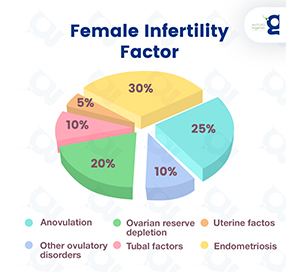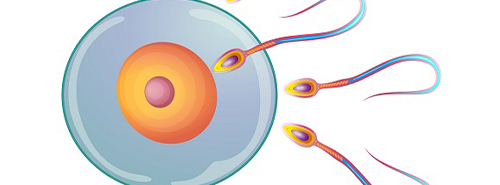
Treatments
CAUSES OF INFERTILITY
Male Factors
Female Factors
Combined
Unexplained
Simply speaking you need – egg, sperm, uterus and tube to make a baby and if there is a problem with any of these, one is likely to suffer from infertility.
WHEN SHOULD YOU START THINKING ABOUT IVF OR ICSI?
FEMALE FACTORS
- If both your fallopian tubes are blocked or badly damaged.
- If you have been diagnosed with unexplained infertility (that means both husband and wife tests are normal) for more than 2 years.
- If you had undergone3-4 cycles of ovulation induction followed by timed intercourse and 3-4 cycle of intrauterine insemination failure
- If you have Moderate to Severe Endometriosis.
- If you have reduced ovarian reserve, which means lower quantity (and sometimes quality) of eggs. It is usually treated with either IVF, or with IVF with egg donation.
- If you have premature ovarian failure than you need IVF with egg donation.
- If you have a problem with your uterus than you need IVF with surrogacy.
- If you are using embryo testing (PGD/PGS) to avoid passing on a genetic condition to your child.

- The male partner has sperm problems, as low sperm count & motility or abnormal shape sperms
- If your husband has zero sperms in semen, than sperms from testis can be retrieved and used in IVF-ICSI

THE ENTIRE IVF PROCEDURE IS DIVIDED BROADLY INTO FIVE STAGES
In a normal ovulation cycle, one egg usually matures per month. In an IVF cycle, the goal is to have as many mature eggs as possible, as this will increase your odds of success with treatment. In the stimulation phase of the IVF cycle, injectable medications are used for approximately 8-12 days to stimulate the ovaries and produce many eggs. Monitoring consists of Transvaginal Ultrasound, which measures the growth of the egg follicles and the thickness of the uterine lining, both of which should be increasing as you take the injectable medications. Hormonal tests – Measures the estrogenlevel. The levels of estrogen in the blood are another indicator of the growth and maturation of the eggs – rising as the follicles grow.

The stimulation phase ends with a trigger shot. The trigger shot provides final maturation to the developing follicles. Timing is crucial in this phase because the egg retrieval must be performed prior to the expected time of ovulation. The egg retrieval itself takes only about 10- 20 minutes. During the procedure, an ultrasound is used to guide a needle into each follicle and remove the follicular fluid and egg. This fluid is then handed over to the embryologist.
FERTILIZATION
After the eggs and sperm are collected, sorted, and prepared, the Embryology Team begins the fertilization process. There are two ways that fertilization can occur Conventional Fertilization or IVF Frequently used in cases such as blocked fallopian tubes, endometriosis, egg donation cycles, surrogacy cycles etc. Here eggs and sufficient number of eggs are mixed in a dish and left for fertilization on their own in the incubator. Intracytoplasmic Sperm Injection (ICSI): In ICSI, single motile healthy sperm is caught with the help of fine needle and injected directly in to the egg, to ensure fertilization.
ICSI is needed in cases
- When the quantity or quality of sperm is poor and therefore unable to effectively penetrate the egg on its own
- When sperms are retrieved from testis
- In cases of unexplained infertility
- Where in previous IVF cycles total fertilization failure happened
- In cases requiring PGD/PGS so that extra sperms do not interfere with genetic analysis

The embryo transfer is a simple pain less procedure under USG guidance that takes about five minutes to complete. Prior to the start of the embryo transfer, the patient reviews her cycle with the IVF specialist and the final decision regarding the appropriate number of embryos to be transferred is made, along with what to do with any remaining embryos. The decision to transfer day 2/3 or day 5( blastocyst ) is taken based on number and quality of embryos on day 2/3 of embryo development. The embryo development day wise is shown in the diagram below

At 12th day following embryo transfer beta HCG blood test is done for confirmation of IVF success. An HCG level of over 5 is considered to be positive although many ongoing pregnancies start out with a beta HCG level of more than 25. This test has to be repeated after 48 hrs again. In healthy pregnancies this level doubles up every 48 hours. IVF success depends on many factors as depicted below in the diagram

Contact Us
Location
New Delhi -110018
